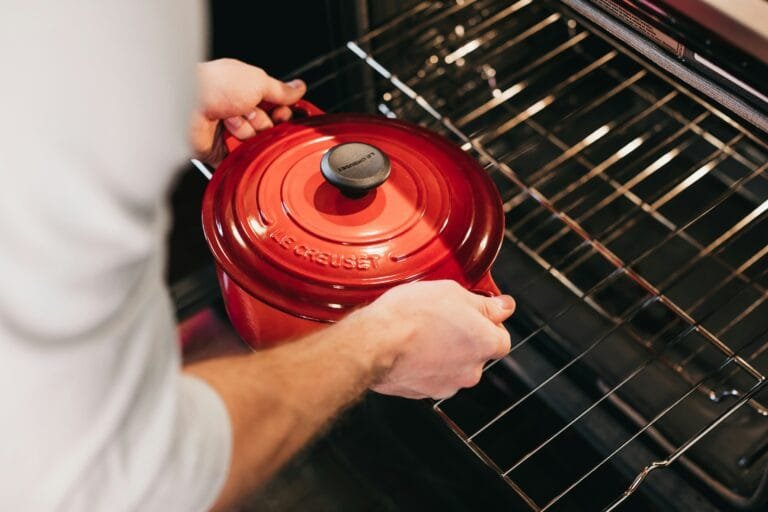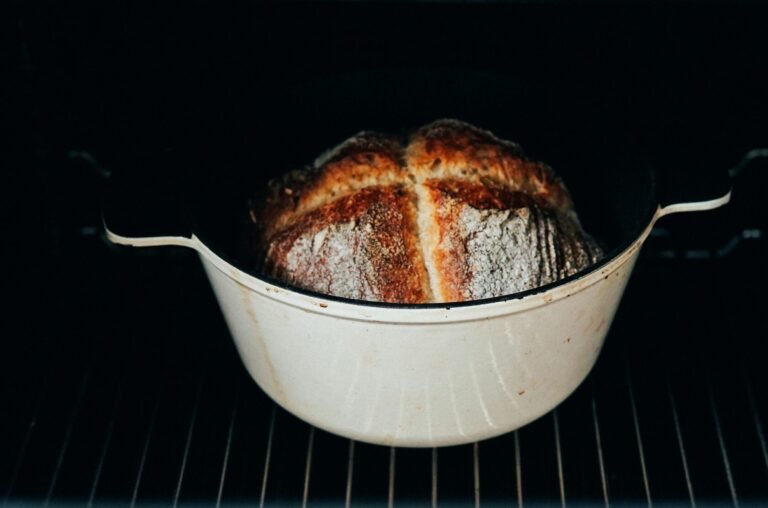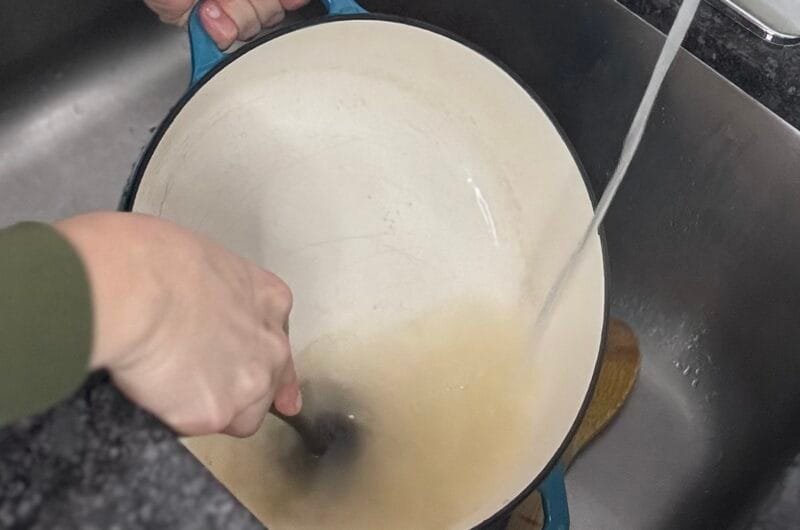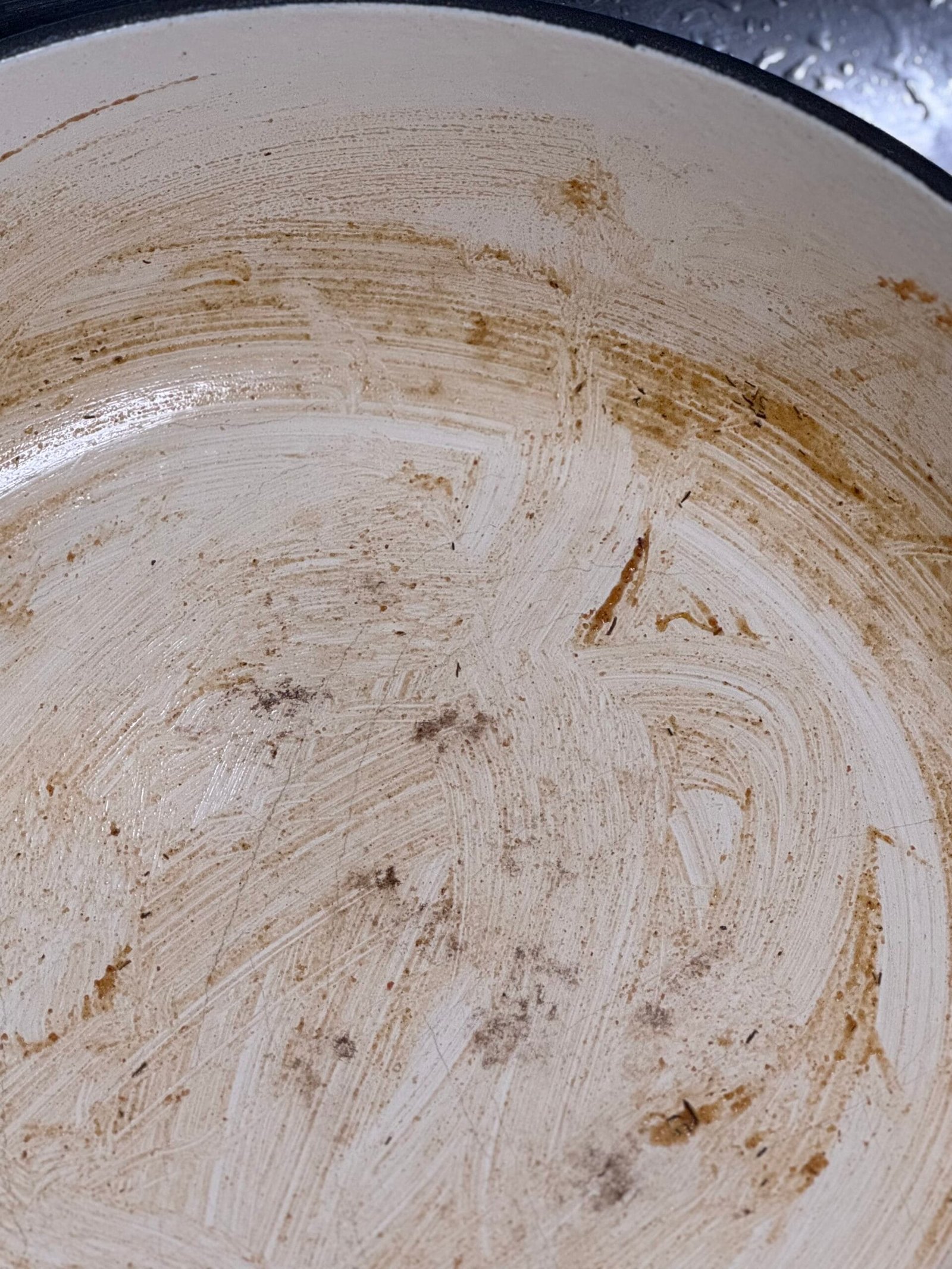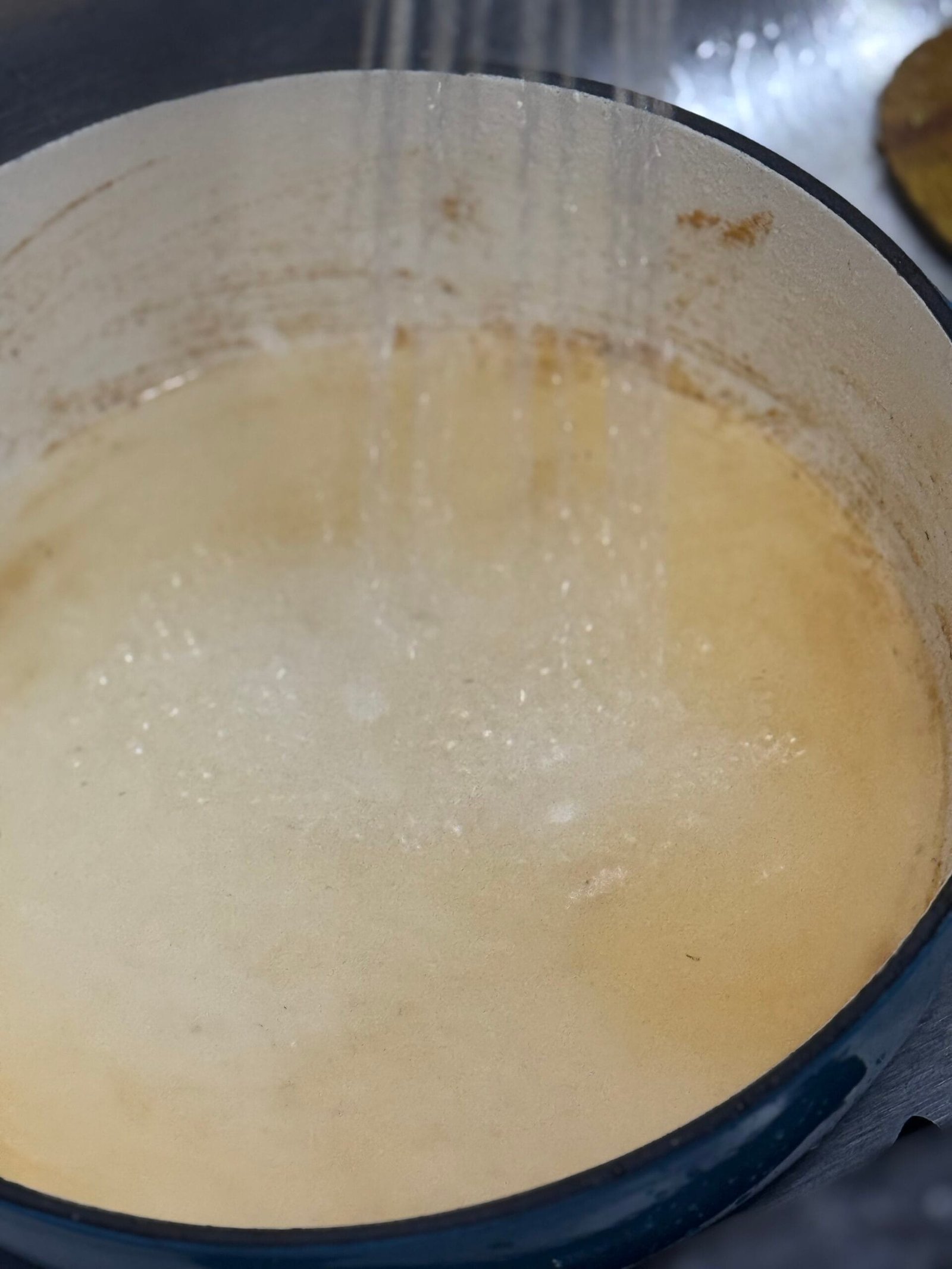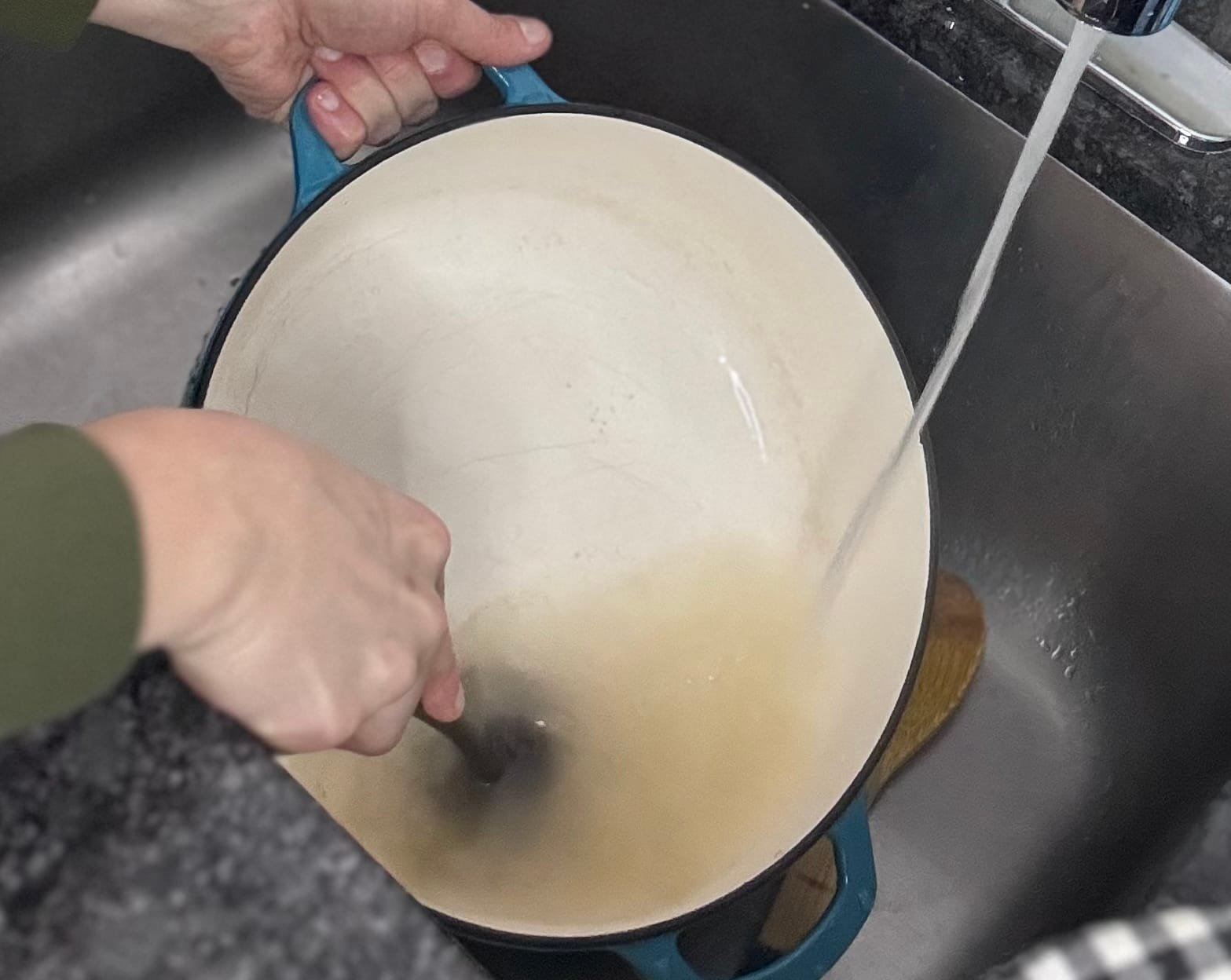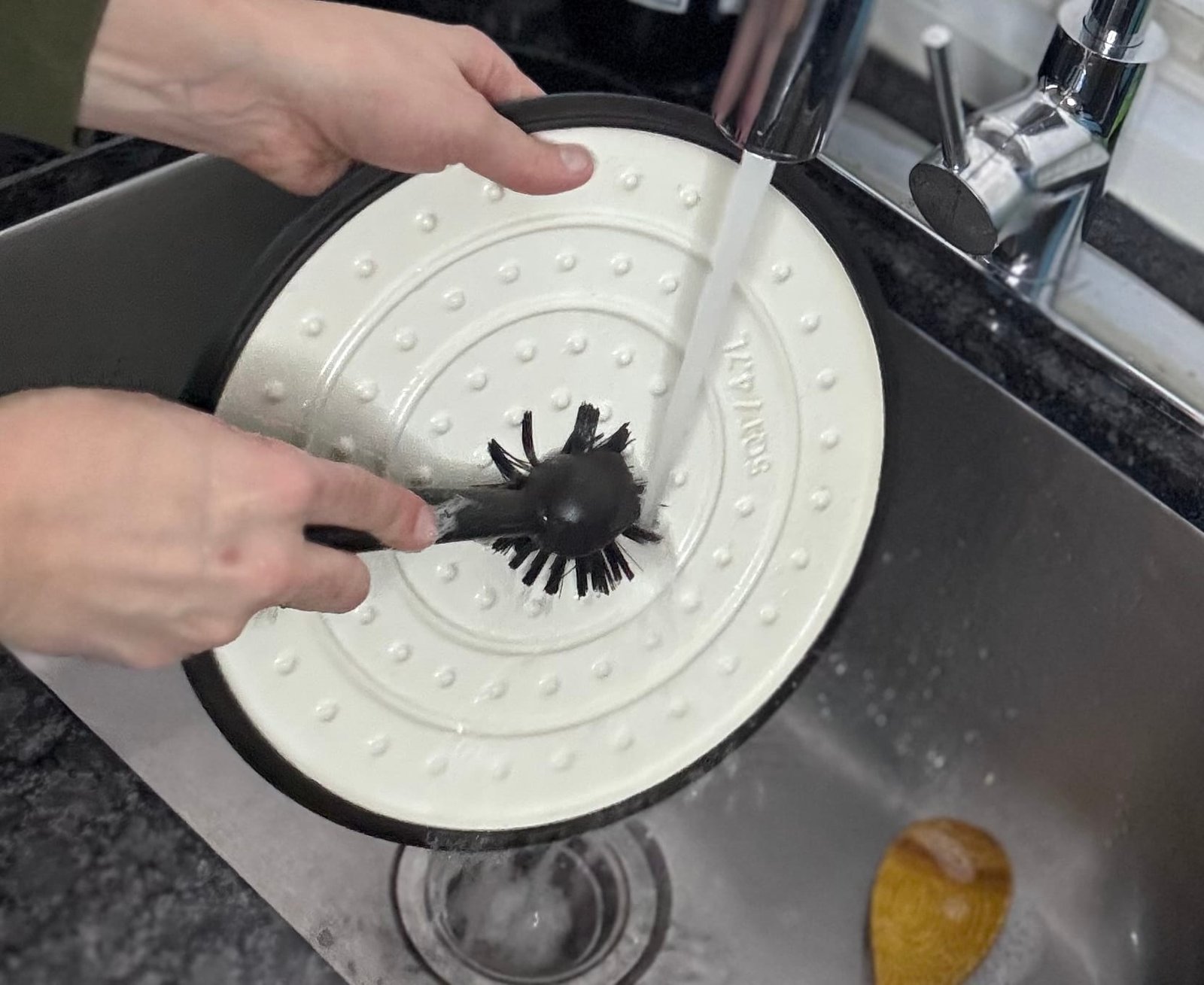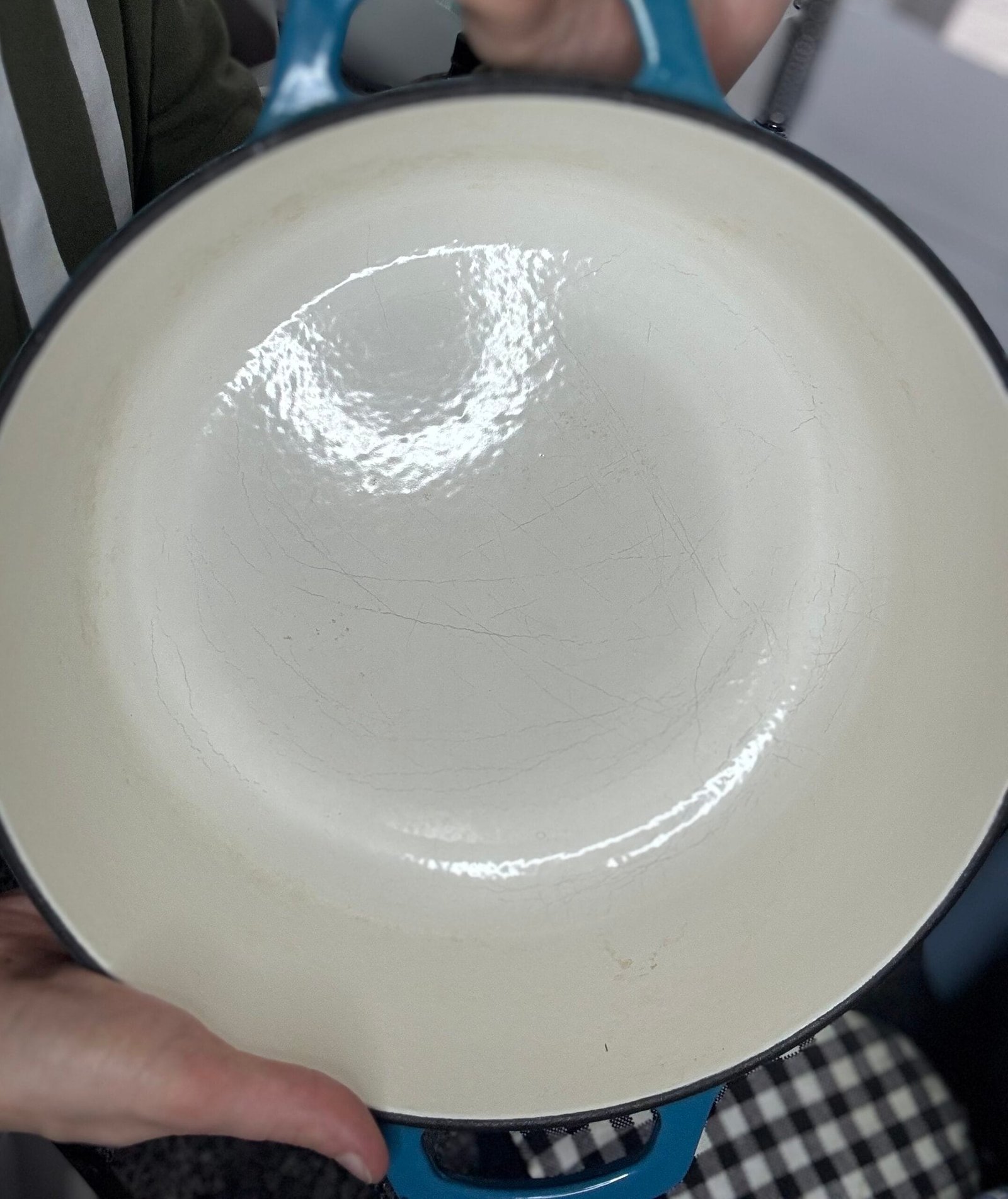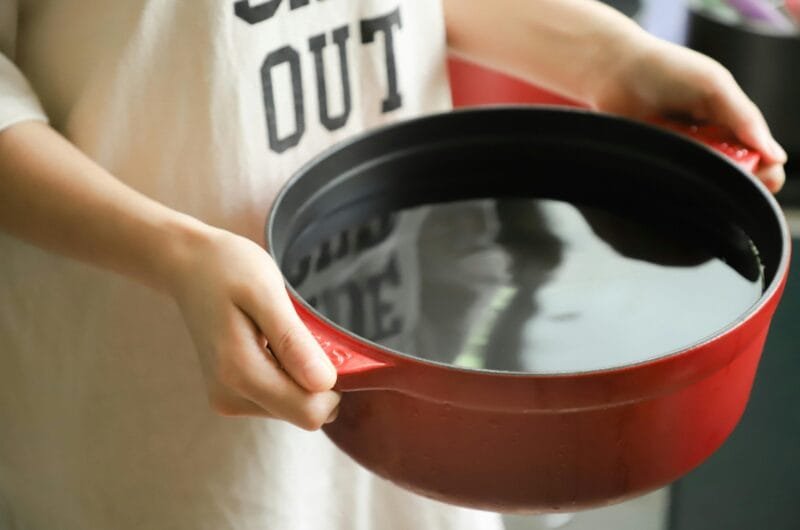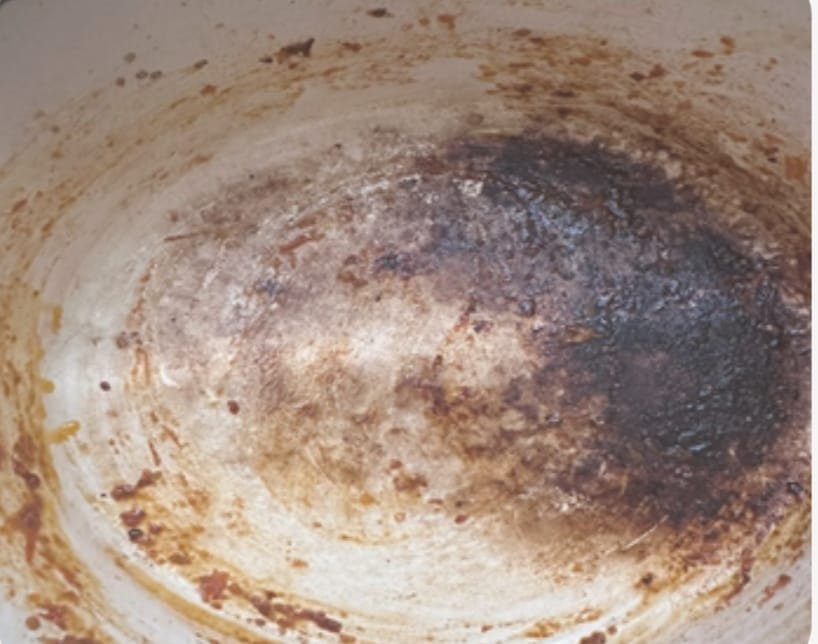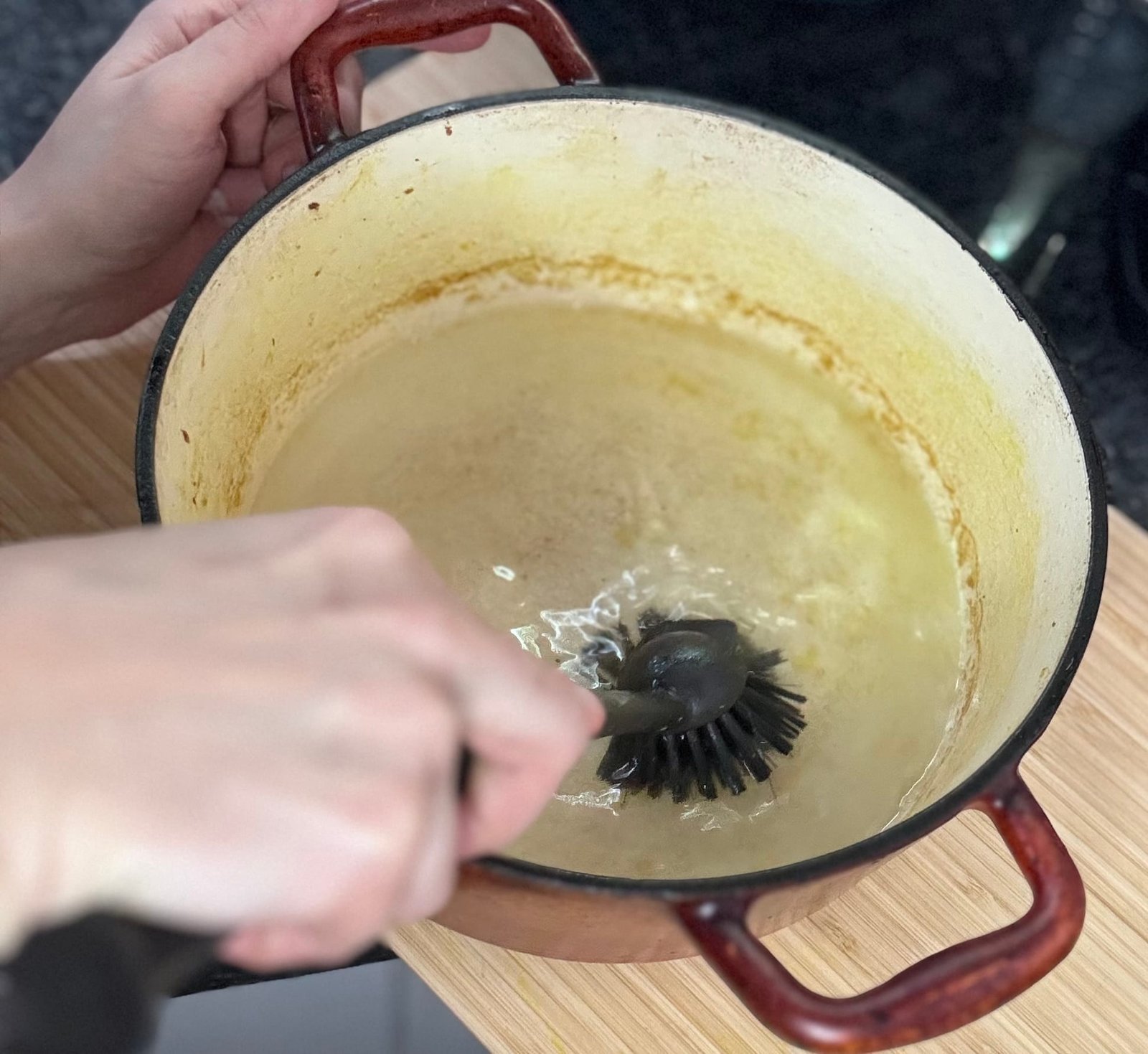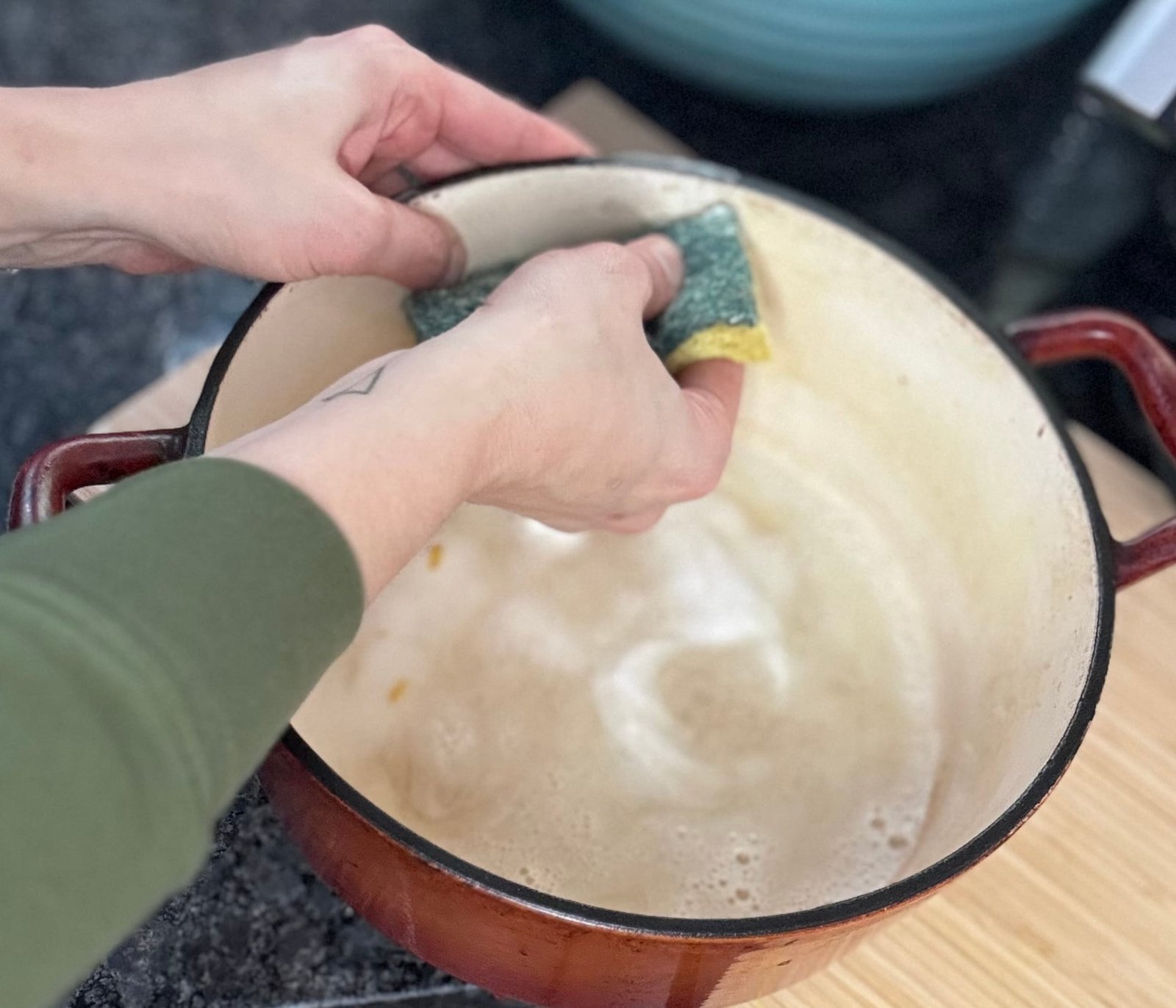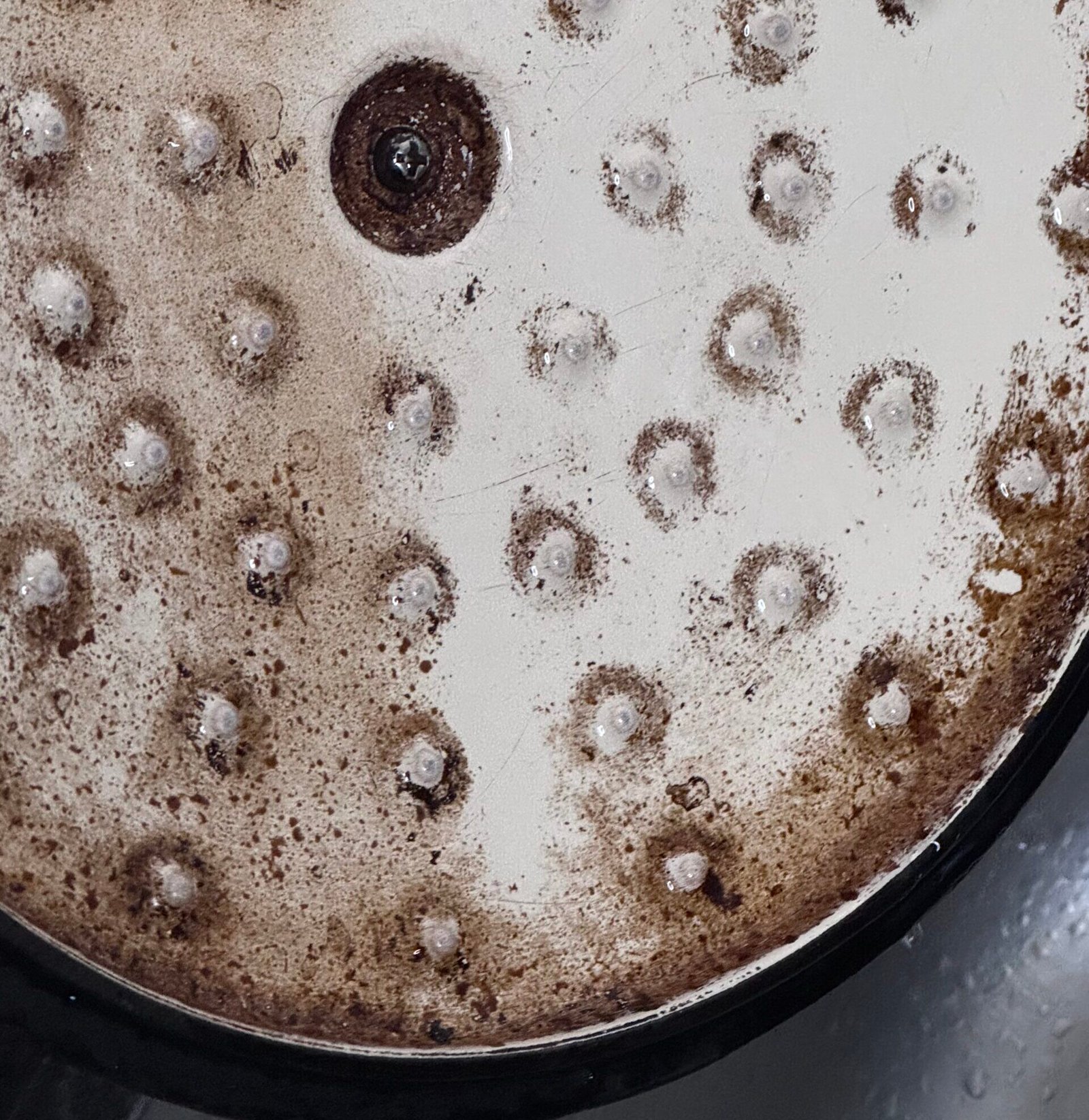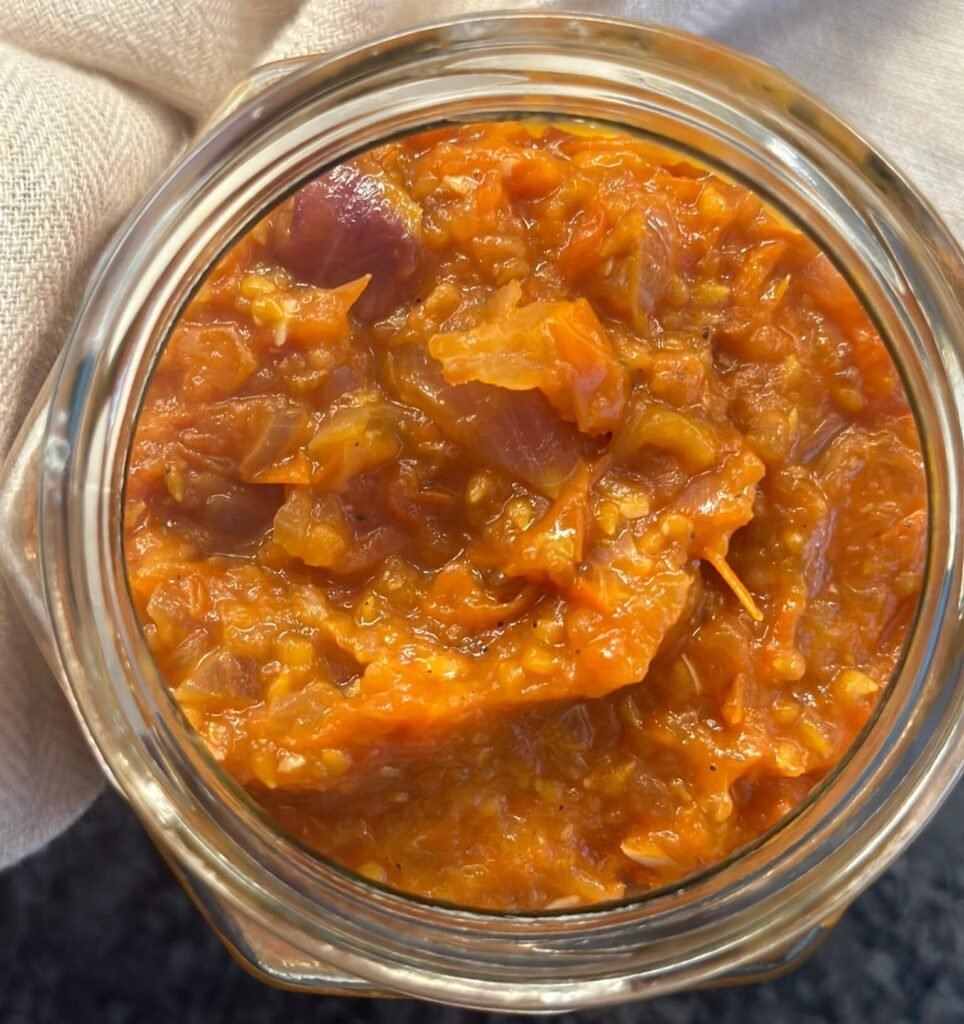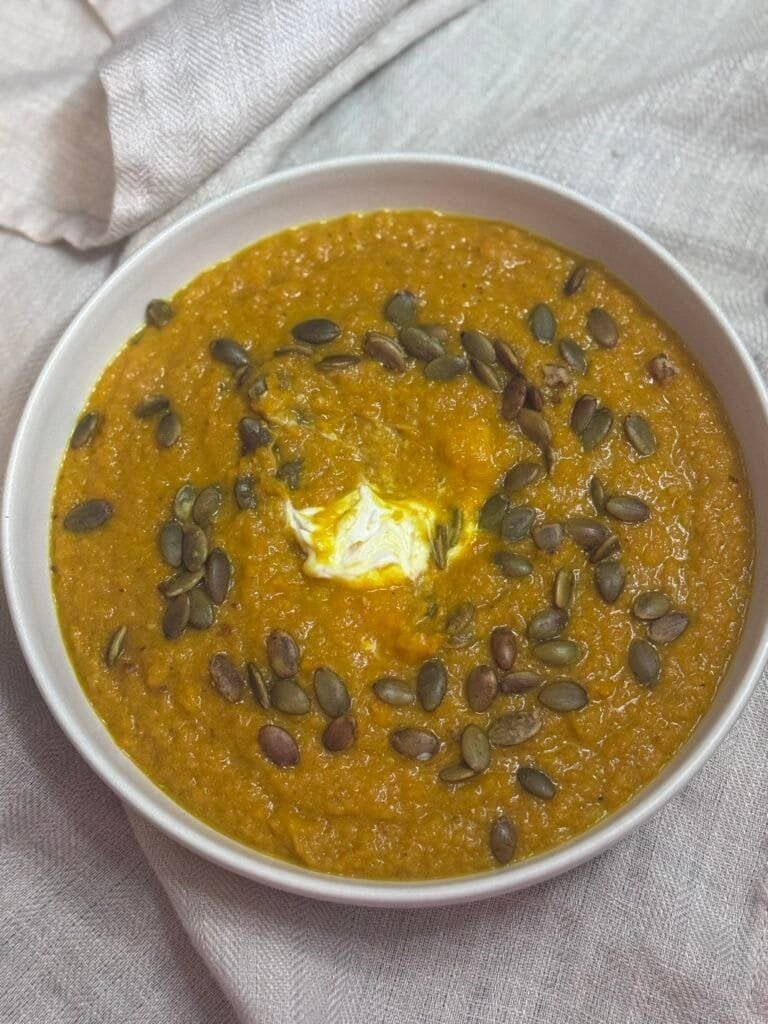It is no secret that I am a huge fan of Dutch ovens. Seriously, I could go on (and on) about why everyone should have at least one. I think the Dutch oven is a real superhero in the kitchen, saving time, making everything taste better, and making cleanup effortless and so easy.

After a lot of research, experimenting, and borderline obsession (don’t judge please), I’ve narrowed it down to 9 solid reasons why the Dutch oven deserves a spot in every home.
But before I dive into today’s topic of how to clean your Dutch oven the right way, let me take a moment to briefly recap the basics.
As an Amazon affiliate, I earn from qualifying purchases.
What the Heck is a Dutch oven
Dutch oven is a heavy-duty pot, originally called a braadpan in the Netherlands (interesting name, right?), which translates to “roasting pan.” And oh, does it live up to the name!
Traditionally, made of cast iron with a tight-fitting lid, today’s Dutch ovens come in many shapes and forms. My favourite is the enameled Dutch oven that comes in all sorts of colours. Not only are they pretty to look at, but they are also so practical, easy to use, easy to clean, and built to last.
So, you may ask “Why the hype?” Oh, where do I start…
The Dutch oven is so versatile, it can handle just about anything you throw at it: from baking, roasting, frying, simmering – you name it. The cast iron Dutch oven can be used on open fire as well while camping.
Honestly, I haven’t found another pot that even comes close to my trusty Dutch oven. If you want a pot that will last for years and will stay in great shape that will be passed down generations, the Dutch oven is the one.
How to Choose the Perfect Dutch Oven
I get it, choosing the perfect Dutch oven for you can be a bit intimidating. With so many options out there, how do you know which one is “the one”?
Don’t worry at all – I’ve got your back!
I’ve put together a handy cheatsheet that breaks down the key factors to consider when searching for your Dutch oven.
It is a no-stress guide to help you make the best choice.
And hey, if you are feeling a little extra curious (because why shouldn’t you), I encourage you to dive a bit deeper and learn more. The more you know, the more confident you’ll feel when you finally make that investment.
Now Let’s Learn How to Clean Your Dutch Oven
So if you followed my enthusiasm, you must have already purchased your first Dutch oven! YAY- congrats! I hope I made the process easier. I am so excited for you and all the flavourful meals, easy cleanups, and stress-free cooking adventures you are about to experience moving forward.
And let’s not forget about that extra space you are about to reclaim in your kitchen. What a win! Honestly, I wish I’d discovered the Dutch oven sooner, it would’ve saved me so much money, space, and frustrations.
Now that you have this amazing pot, you might be wondering: How to clean it? How to care for it? But, no worries at all – I’ve got you covered here as well!
Why Taking Care of Your Dutch Oven Matters
I think by now we’ve established how amazing the Dutch oven is. But let’s talk a bit about why proper care is so important. Yes, it is true that a Dutch oven comes with a slightly higher price tag, but hear me out on this – it’s worth every single penny you spend!
Think about it as a pot that will outlast your other cookware, will definitely save you time and effort, and even better, will help you reclaim some extra kitchen space by replacing multiple pots and pans (you probably rarely use).
That is why, caring for it properly, matters a lot. You are not just protecting your investment, but you are also making sure that will last for years (and maybe even generations). So trust me, giving your Dutch oven a little care and love is totally worth the effort.
What Does a Good Care Mean?
*This post is focused on tips for cleaning enameled Dutch ovens. If you’re looking for guidance on cleaning cast iron Dutch oven, be sure to download my guide for detailed instructions (follow tip #1: How to clean cast iron pan).
Taking good care of your Dutch oven is easier than it sounds, I promise you that. Here are some basic rules to follow:
- Make sure the Dutch Oven cools down completely, before you start the cleaning. Otherwise, the enamel can get damaged.
- Skip the harsh chemicals, strong soaps and steel wool. It is absolutely unnecessary – they can easily strip the seasoning of your Dutch oven or damage the enamel which is what gives it that amazing non-stick feature.

- Keep the cleaning process simple. Stick to washing in warm water and a non-abrasive silicone or soft brush (or sponge) to scrub gently.
- For stubborn bits or burns, just soak it in warm water for about one hour, then gently scrub with a soft brush. If something is pretty resistant to scrub off, soak for another hour, and repeat the process. I rarely do this, as the pot is often clean after the first try.
- About once a month (or every 3 months if you don’t use it as often), spend some time on deep cleaning. You can make a paste of baking soda and water to gently scrub your Dutch oven to keep it looking glossy and fresh. Simply mix 1 part of water with 3 parts of baking soda. This can be applied on both the inside and outside layers. I love this step, as no chemicals are used, only natural healthy ingredients.
- Moisture is the enemy of the cast iron, so always dry your Dutch oven thoroughly. You can do that by either patting with a dry kitchen towel, or let it air dry completely. Simple way to do that is leaving the lid slightly ajar to let any sneaky moisture evaporate slowly.
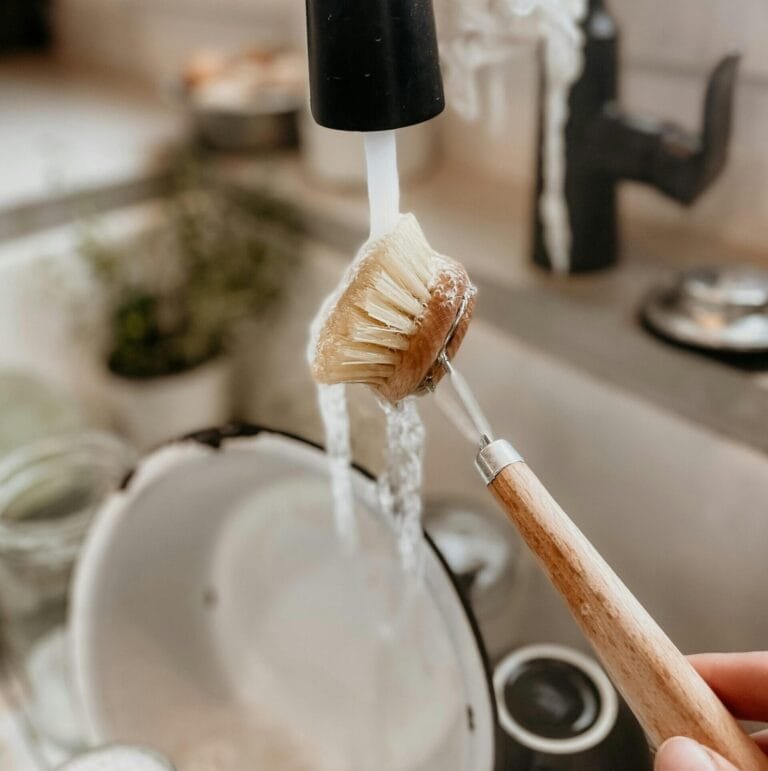
And that’s it! I hope I convinced you that keeping your Dutch oven in top shape is quite a simple process. It is primarily based on using gentle tools and proper care. I struggled so much over the years finding good pots and later with cleaning them. Once you give it a try, you’ll see just how easy it is.
For more helpful tips and step-by-step guidance in the kitchen, be sure to download my free guide to learn more.
How to Clean Your Dutch Oven (For Light Food Bits)
Recipe by BibaLearn how to properly clean your Dutch oven with these easy tips. Keep your favourite pot in top shape with simple cleaning methods that save time and effort. Follow these steps for cleaning light food bits.
What You Need
A splash of dish soap
Warm water
Soft silicone brush or dish sponge to scrub gently
Directions
- Let your Dutch Oven cool completely, before you start the cleaning.
- Add a splash of dish soap and warm water to cover the stains.
- Gently scrub with a silicone brush or soft sponge. It should be fairly easy to clean it. For stubborn bits, soak the Dutch oven in warm water for about an hour, then scrub again. Repeat, if needed.
- Rinse with water and let it air dry on a dish rack or upside down on a kitchen towel.
- Before storing, ensure the Dutch oven is completely dry. Leave the lid slightly open overnight, then store.
How to Deep-Clean Your Dutch Oven (For Stubborn Food Bits or Burns)
Learn how to properly clean your Dutch oven with these easy tips. Keep your favourite pot in top shape with simple cleaning methods that save time and effort. Follow these steps for deep cleaning or stubborn bits.
What You Need
- For the paste
1 part water
2 parts baking soda
- For cleaning
Warm water
Soft silicone brush or dish sponge to scrub gently
Directions
- If the regular cleaning process (described above) does not work, follow these steps for deep cleaning instead.
- Make the paste
- Mix 1 part water and 2 parts baking soda (e.g., 1 tablespoon water + 2 tablespoons baking soda) into a paste.
- Ensure your Dutch oven is cool before starting.
- For heavy stains, add a bit of dish soap and warm water. Gently scrub, rinse, and start the deep cleaning.
- Apply the paste to the stains and start gently scrubbing. Stains should come off fairly easily - repeat this step, if necessary.
- Rinse thoroughly and let it dry naturally for moisture to evaporate. Before storing, ensure it's completely dry by leaving the lid slightly open overnight.
Notes
- Deep cleaning your Dutch oven at least every 3 months will help keep it in great condition for years to come.
Just Something to Keep in Mind
If the inside enameled layer turns yellowish or darker over time, don’t worry – it’s completely normal and expected. In fact, manufacturers often mention that this natural darkening improves the enamel’s performance. Just be careful not to scratch it with heavy or inappropriate scrubbing, as that could cause damage.
Do You Like This Post?
Try These Dutch-Oven Inspired Recipes
Hi, I’m Biba, the creator of Chick in Apron! As a busy mom and food blogger, I am passionate about making cooking fun and stress-free!
I share simple, delicious recipes that are quick and easy to prepare, along with helpful kitchen hacks to save you time.
So, let’s turn cooking into something you enjoy with tasty meals and handy tips to make kitchen tasks a breeze! ✨ Join me on this journey 🍲🥗

